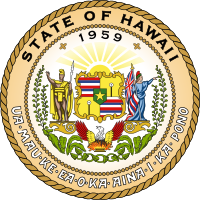Self-Inspection Checklists
Checklists
Self-Inspection
The most widely accepted way to identify hazards is to conduct safety and health inspections. The only way you can be certain of the actual situation is for you to look at it from time to time.
Make a Self-Inspection of Your Business
Begin a program of self-inspection in your workplace. Self-inspection is a must if you are to know where hazards exist and whether they are under control.
|
|
|---|
Following this introduction, you will find checklists designed to assist you in this fact-finding. They will give you some indication of where you should begin to make your workplace safer and more healthful for all employees.
These checklists are by no means all-inclusive. You may wish to add to them or delete portions that do not apply to your business. Consider carefully each item as you come to it and then make your decision.
Dont inspect for items that obviously have no application to your business. Make sure you or your designee see each item. Leave nothing to memory or chance. Write down what you see, or dont see, and what you think you should do about it.
When you have completed the checklist, add this material to your injury information, your employee information, and your process and equipment information. You will now possess many facts that will help you determine what problems exist. Then, if you use the HIOSH standards in your problem solving process, it will be much easier for you to determine the action needed to solve these problems.
Once the hazards have been identified, you can institute control procedures and incorporate them into your injury and illness prevention program.
Technical assistance in self-inspection may be available to you through your insurance carrier, safety organizations, and many local, state, and federal agencies, including HIOSH. Additional checklists are available from the Internet, trade associations, insurance companies, and other similar service organizations.
Self-Inspection Scope
The scope of your self-inspection should include the following:
Processing, Receiving, Shipping and Storage:equipment, job planning, layout, heights, floor loads, projection of materials, materials-handling and storage methods.
Building and Grounds Conditions: floors, walls, ceilings, exits, stairs, walkways, ramps, platforms, driveways, aisles.
Housekeeping Program: waste disposal, tools, objects, materials, leakage and spillage, cleaning methods, schedules, work areas, remote areas, storage areas.
Electricity: equipment, switches, breakers, fuses, switch-boxes, junction boxes, special fixtures, circuits, insulation, extension cords, tools, motors, grounding, NEC compliance.
Lighting: type, intensity, controls, conditions, diffusion, location, glare and shadow control.
Heating and Ventilation: type, effectiveness, temperature, humidity, controls, natural and artificial ventilation and exhausting.
Machinery: points of operations, flywheels, gears, shafts, pulleys, keyways, belts, couplings, sprockets, chains, frames, controls, lighting for tools and equipment, brakes, exhausting, feeding, oiling, adjusting, maintenance, lockout, grounding, work space, location, purchasing standards.
Personnel: training, experience, methods of checking machines before use, type clothing, personal protective equipment, use of guards, tool storage, work practices, methods of cleaning, servicing, or adjusting machinery.
Hand and Power Tools: purchasing standards, inspection, storage, repair, types, maintenance, grounding use and handling.
Chemicals: storage, handling, transportation, spills, disposal, amounts used, toxicity or other harmful effects, warning signs, supervision, training, protective clothing and equipment.
Fire Prevention: extinguishers, alarms, sprinklers, smoking rules, exits, personnel assigned, separation of flammable materials and dangerous operations, explosion-proof fixtures in hazardous locations, waste disposal, training.
Maintenance: regularity, effectiveness, training of personnel, materials and equipment used, records maintained, specific methods of locking out machinery, general methods.
Personal Protective Equipment: type, size, maintenance, repair, storage, assignment of responsibility, purchasing methods, standards observed, training in care and use, rules of use, methods of assignment, medical evaluation.

